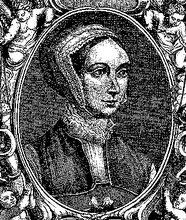Since this year is my Silver Jubilee year and today is my birthday, a day in which I always remember Mary, Queen of Scots and, since the year 2001, celebrate the Mass of St Josephine Bakhita, I will make here an itinerary of my priestly appointments.
September 1982 till June 1988 - preparation for priesthood at the English College, Valladolid, Spain.
11th April 1987 - ordained deacon in Valladolid.
16th July 1988 - ordained priest at St Anne's Cathedral, Leeds.
17th July 1988 - First Mass at Our Lady of Lourdes church, Headingley, Leeds.
August 1988 to September 1990 - Curate at St Anne's Cathedral, Leeds. During this time I was also chaplain at the Leeds General Infirmary.
September 1990 to August 1994 - Curate at St Gregory the Great parish, Leeds.
May 1991 to September 1998 - Part-time chaplain at HM Prison Thorpe Arch, near Wetherby.
August 1994 to September 1998 - Parish priest at St Peter's, Leeds.
October 1996 to May 1998 - MA studies through Maryvale, Birmingham.
September 1998 to June 2000 - Licentiate studies at the John Paul II Institute in Valencia, Spain. During this time I worked in the parishes of Nuestra Senora del Remedio, Valencia, San Jose in Torrente, and Nuestra Senora de Serra in Serra.
August 2000 to August 2004 - Parish Priest at St Aelred's in Harrogate. During this time I was also chaplain to the Harrogate Hospital.
September 2000 to December 2004 - Chaplain to the Youth 2000 Mission Team in East Keswick, near Wetherby.
August 2004 to September 2007 - Parish priest at Our Lady of Lourdes in Huddersfield. During this time I was also Chaplain to Huddersfield University.
September 2007 to July 2008 - Parish priest at St Briget's in Leeds.
August 2008 to August 2010 - Chaplain to Campion College, Sydney, Australia.
August 2009 to August 2012 - Assistant Spiritual Director at the Seminary of the Good Shepherd, Sydney, Australia.
September 2012 to present - acting supply to St Joseph's parish in Pontefract.
As you can see I have been a Parish priest four times already and I have lived abroad for twelve years; eight years in Spain and four years in Australia. Everything that has happened to me above was chosen for me - I had no part in it! I never in my wildest dreams thought that any of the above would happen to me as a priest. God is in charge and God is very, very great indeed. Where will He send me next?
(The above photo of me with Bishop Julian Porteous and Fr Julian Green was taken in July 2009 in the sacristy of St Mary's Cathedral, Sydney.)

























